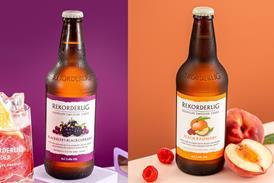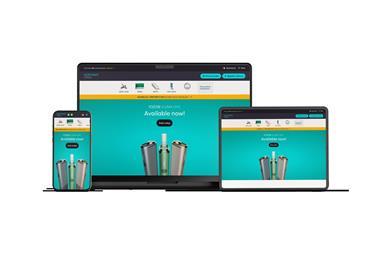A headline on the BBC business news last month which screamed ‘The death of the weekly supermarket shop’ only served to tell us in the convenience sector what we already know. And that is that since the recession, people are shopping little and often.
What started as a way to keep control of budgets and reduce food waste has become habitual for most shoppers, and the likes of Tesco are counting the cost of the trend with a jaw-dropping fall in profits and declining footfall.
C-store retailers have traditionally been seen as the home of the top-up shopper, however the percentage of top-up shoppers has been in slow decline over the past few years, according to HIM Research and Consulting. But the good news is that while it looked like the c-store sector was losing the battle for top-up shoppers to the multiples’ smaller formats and the discounters, this band of shoppers are making a welcome return to small stores.
The Perfect Store
Unilever’s Partners for Growth has been working with retailers to devise the perfect store layout to match customers’ expectations and behaviour, with its first project involving United Co-operatives.
The test store was redesigned to tailor it to customers’ needs and the layout changed dramatically, with products grouped by shopper mission. By putting top-up categories together, customers on a ‘need it now’, or ‘distress’ mission topped up with other goods.
Baskets were positioned around the store - especially in the top-up area - and were colour-coded so that the retailer could see which part of the store they have come from. As a result of the changes, average weekly sales rose by 10%, and shoppers said the store was “more logical” to shop, with a more natural flow that made it easier to find the items they were looking for.
“Since our initial work with United Co-operatives we have worked with a number of retailers - both large and small - using the same principles and we have witnessed similar uplifts across the board,” says Nick Widdowson, range and merchandising manager at Unilever UK.
He adds that re-plotting your layout according to your customer needs or shopper mission is more productive than just laying out the store by traditional categories.
For more information, go to partnersforgrowth.unilever.com.
The latest HIM data found that between spring 2013 and spring 2014 the percentage of shoppers on a top-up mission in the convenience sector increased from 30% to 31% and had hit 32% by this summer.
The research also highlighted another bonus: these shoppers aren’t there on a distress mission, but are on a planned shopping visit. They are typically higher spending shoppers who purchase fresh and chilled items in between their big supermarket or online shop, and view c-stores as a credible shopping destination rather than just a distress destination.
What makes the HIM statistics gratifying for store owners is that top-up is the most valuable mission in convenience, worth £12.3bn, according to HIM’s CTP 2014.
If retailers want to continue to gain business from the top-up shop, though, they’ll have to take on the discounters, as HIM says they continue to be the biggest winners of the top-up shop, with 71% of UK adults now topping up in a typical month, compared with 65% using convenience.
HIM research director Blake Gladman believes many shoppers choose the likes of Aldi and Lidl to top-up because the items they need are more likely to be available there, there’s often a wider range and they’re cheaper.
He says the secret lies in offering a good range of fresh produce. “C-stores need to become a more credible destination for fresh - to persuade people away from the discounters and the smaller format Tescos,” he says.
And you can see his point when, for most people, top-up shopping means items such as fresh fruit and veg, fresh meat, bread and milk.
He acknowledges that many c-stores offer ‘fantastic’ fresh ranges, but says there is still a problem with perception - and shoppers need to be educated about the fact that c-stores are credible places to go for fresh items.
“There’s a lot more TV advertising for c-stores, which is helping to build brand perception, but retailers can also get the message across in leaflets, via external messaging and through in-store displays.
“Shoppers visit c-stores three times a week on average so if they are just going in for a newspaper and see a good display of fresh foods then they’re more likely to go back for those items. Retailers need to convert those on a newsagents mission to a top-up shop to drive up the basket spend.”
Little and often
Ammo Bhdaal from Spar Auckley in Doncaster first noticed the ‘little and often’ trend way back in 2008, when the credit crunch hit his shoppers in the wallet.
Obeying the rules
Chilled food and dairy are in the top three categories purchased at both a planned and distress top-up mission, so it’s important you get them right. They also play a role in other growing missions such as food for tonight and food to go.
Kerry Foods’ customer marketing controller Richard Tyler reckons that by obeying simple rules, convenience retailers can unlock the growth potential. “Dedicate most of the chiller to top-up and food-to-go missions,” he advises. “Arranging the stock in a logical ‘mission blocking’ way that helps your shoppers find what they are looking for is a vital ingredient for successful chilled retailing. And inspire your customers to fulfil their mission by using colourful ‘Tea for Tonight’ signage.”
“Habits changed as people had less money in their pockets,” he says, “and they didn’t trust themselves to go to the big shops where they’d be enticed into buying more items than they needed.
“We decided then to highlight that we could be their larder. We told them they didn’t need to go out to the big shops, but could nip down to us instead, as we are on their doorstep and are available for the essentials.”
Little and often was good news for Ammo as between 2007 and 2008 his basket spend went up 12%. For his store, top-up baskets mainly comprise fresh foods, but he says they really could be anything from household items such as soap powder to something for tonight’s tea.
He says customers today are not necessarily coming in more often, just spending more.
It’s a different story for Allan Robertson at Londis Craigmillar, whose number of transactions has gone up by an amazing 800-900 a month since January.
“People are topping up a lot more - little and often,” he explains, “but it’s not so much fresh food but snack foods such as crisps and juice that they are buying. We’ve not seen a dramatic rise in fresh sales.”
Allan has been in retailing for 25 years, but in his current store for just 10 months. He says it’s a difficult store to label: “We’re in a very deprived area. Our shop has a post office so people get their giro and buy on a day-to-day basis. They only buy from around here; they don’t do a big shop. And they’re always looking for a bargain so even if something is reduced to £2 at 9am, people will leave it and come back at 8pm to see if it’s been cut further.”
Basket spend
“The shopping pattern is different again at Budgens of Harleston in Norfolk. Manager Steve Charlton says that footfall has dropped since the summer, but average basket spend is up to more than £11.
“I really don’t know why this is happening. Like everyone else, I’d have expected it to be the other way around - with shoppers popping in more frequently.”
By way of some sort of explanation, Steve says: “We’re a promotionally-driven store and we’ve become a destination store for certain promotions. In addition, we’re set back from the high street which means people have to make more of an effort to come to us, rather than popping in when they’re passing.”
A top-up basket at the 8,000sq ft store is typically a mix of fresh foods as well as staples such as milk and bread.
HIM statistics back up Steve’s experience. Its research reveals that top-up shoppers buy more items and purchase across a range of categories. In spring 2014, 13% of shoppers in the c-store channel were buying five or more items on each visit, but during the summer this had risen to 17%.
The proportion of top-up shoppers buying just one item fell from 29% in the spring to 26% in the summer.
Gladman’s advice to retailers to keep hold of the lucrative top-up shopper is to find out exactly what their shoppers want, whether it’s bread and milk, high-quality fresh foods or the keenest promotions. “Convenience retailers are never going to be able to compete on range so they need to understand what shoppers are looking for,” he says.
“They need to communicate with shoppers to find out what they want. Epos only tells you what people are buying, not what they actually came into your shop for and perhaps couldn’t find - those missed opportunities.”
Success for mini meatballs
Since its launch in 2013, Kerry Foods says its Richmond Mini Meatballs has achieved £2.2m-worth of retail sales and 5% penetration by successfully tapping into the trend for quick, wholesome meal solutions that modern mums are looking for.
Potential for bakery growth
Despite the fact that nearly a quarter of meal occasions already contain wrapped bakery, Allied Bakeries says that providing a variety of versatile products such as rolls, wraps, bagels and sandwich thins is a great way to tap into more meal occasions and shopping missions, driving trial, repeat purchase and incremental sales.
Cook up a storm with recipe cards
Providing recipe cards near the chiller cabinet can help retailers make the most of the lucrative ‘meal for tonight’ shopper mission. So says Susan Nash, trade communications manager at Mondelez International.
“By supporting these with cross-category promotions linked to the recipes and by grouping ingredients together where possible, retailers can help to drive impulse purchases and increase customers’ spend. Retailers can also add theatre to their display by using POS material,” she adds.
Great White hope
According to Nielsen data, Kingsmill Great White achieved an 8% share of the standard white bread sector in just three months. Kantar Worldpanel data reveals it has attracted new consumers to the sector, helping to stem the decline in white bread sales.





![PLAUK0125 Jacobs The Trussell Trust Portrait[53]](https://d2dyh47stel7w4.cloudfront.net/Pictures/274x183/6/4/1/322641_plauk0125jacobsthetrusselltrustportrait53_125111_crop.jpg)











![PLAUK0125 Jacobs The Trussell Trust Portrait[53]](https://d2dyh47stel7w4.cloudfront.net/Pictures/380x253/6/4/1/322641_plauk0125jacobsthetrusselltrustportrait53_125111_crop.jpg)









No comments yet